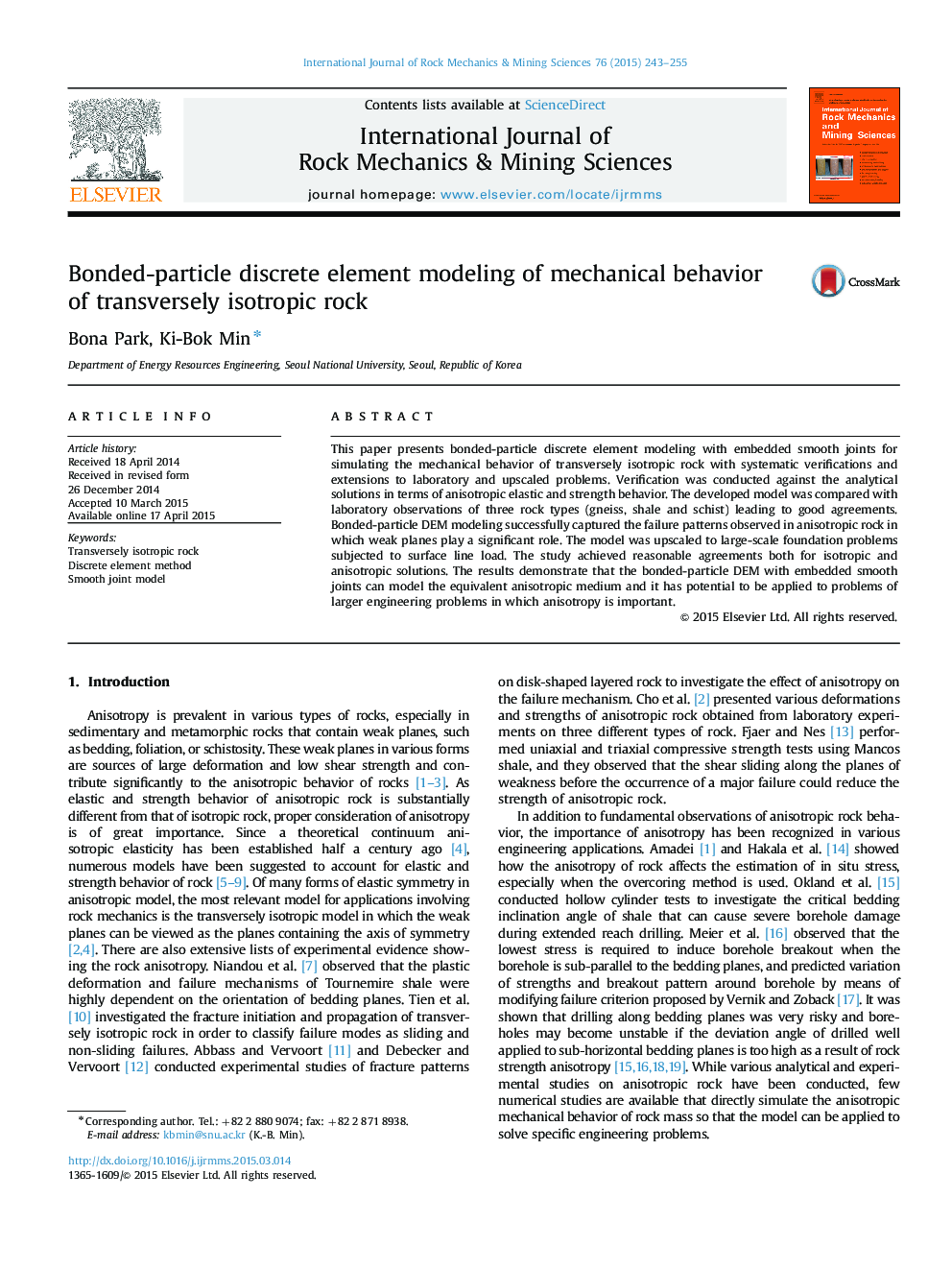| کد مقاله | کد نشریه | سال انتشار | مقاله انگلیسی | نسخه تمام متن |
|---|---|---|---|---|
| 809438 | 1468693 | 2015 | 13 صفحه PDF | دانلود رایگان |
• Transversely isotropic (TI) rock is modeled by bonded-particle DEM.
• Anisotropic behavior of the DEM model is verified with analytical solutions.
• DEM model compared well with laboratory results.
• The effect of layers in TI rock is analyzed for uniaxial and tensile tests.
• Stress distribution in TI rock due to surface line load is reproduced in DEM.
This paper presents bonded-particle discrete element modeling with embedded smooth joints for simulating the mechanical behavior of transversely isotropic rock with systematic verifications and extensions to laboratory and upscaled problems. Verification was conducted against the analytical solutions in terms of anisotropic elastic and strength behavior. The developed model was compared with laboratory observations of three rock types (gneiss, shale and schist) leading to good agreements. Bonded-particle DEM modeling successfully captured the failure patterns observed in anisotropic rock in which weak planes play a significant role. The model was upscaled to large-scale foundation problems subjected to surface line load. The study achieved reasonable agreements both for isotropic and anisotropic solutions. The results demonstrate that the bonded-particle DEM with embedded smooth joints can model the equivalent anisotropic medium and it has potential to be applied to problems of larger engineering problems in which anisotropy is important.
Journal: International Journal of Rock Mechanics and Mining Sciences - Volume 76, June 2015, Pages 243–255
